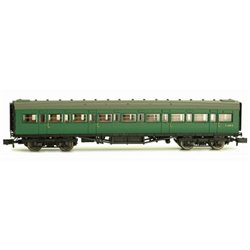There are a number of different options for attaching figures such as a horse and rider to a layout. Perhaps the...
No products
Product successfully added to your shopping cart
There are 0 items in your cart. There is 1 item in your cart.
Search Tips
Where were first, second, and third class coaches typically located on a train?
The location of first, second, and third class coaches varied depending on the era and the specific train design. However, there were some general trends that can be observed.
In the early days of railway travel, first class coaches were typically positioned towards the front of the train, closest to the locomotive. This was because first class passengers were considered to be the most important and deserving of a smooth and comfortable ride. Second class coaches were usually located in the middle of the train, while third class coaches were placed towards the rear. Understandably, ticket prices reflected this and were commensurate with a given passenger's location on a train.
As time went on and the railway network expanded, the positioning of the classes became more standardised. By the late 19th and early 20th centuries, the typical arrangement was for first class coaches to be located at the front of the train, followed by second class coaches, and finally third class coaches towards the rear. This arrangement allowed for easier access to the different classes of accommodation.
It is important to note that the arrangement of classes could vary depending on the specific train service and the preferences of the railway company. Additionally, with the introduction of new train designs and the eventual phasing out of third class, the positioning of classes has inevitably evolved over time.
Click here to receive the tips weekly in your mailbox. You can unsubscribe at any time.








